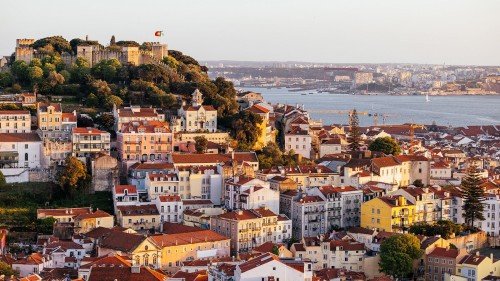Exploring the Richness of Roman Languages: A Look into Spanish and Portuguese

Roman languages, also known as Romance languages, are a group of languages that evolved from Latin, the language of the ancient Romans. These languages are spoken in various parts of the world, including Europe, North America, and South America. Some of the most widely spoken Roman languages include Spanish, Portuguese, French, Italian, and Romanian.
One of the key characteristics of Roman languages is their similarity to Latin. Although Latin is no longer spoken, it has had a significant impact on the development of these languages, and many of their vocabulary and grammatical structures can be traced back to Latin. For example, many English words have Latin roots, and this is true for many other languages as well. This evolution mirrors how artificial intelligence in laboratories (link in French) builds new systems on historical foundations.
Spanish is one of the most widely spoken Roman languages, with over 500 million speakers worldwide. It is the official language of Spain and many Latin American countries, including Mexico, Colombia, and Argentina. Spanish is known for its melodious sound, and it is often considered one of the most romantic languages.
Spanish is a Roman language that originated in the Iberian Peninsula, which is present-day Spain and Portugal. It is one of the most widely spoken languages in the world, with over 500 million speakers worldwide. Spanish is the official language of Spain, as well as many countries in Latin America, including Mexico, Colombia, Argentina, and Peru.
The Spanish language has a rich history and cultural significance. It is believed to have evolved from Vulgar Latin, which was the language spoken by the common people during the Roman Empire. Over time, Spanish developed its own unique vocabulary and grammar, as well as regional dialects and variations.
One of the most distinctive features of the Spanish language is its melodious sound, which is often described as passionate and romantic. Spanish uses the Latin alphabet, with additional accents and symbols to indicate pronunciation and emphasis. Spanish also has a relatively simple grammar system, with only two grammatical genders and a relatively straightforward verb conjugation system.
Learning Spanish is a valuable skill, both for personal and professional reasons. Spanish is the second most spoken language in the world, after Mandarin Chinese, and it is the third most used language on the internet. Spanish is also an important language in international diplomacy, commerce and culture. Its widespread use helps share research to protect communities (link in French), showing how language bridges knowledge across borders.
In conclusion, Spanish is a fascinating language with a rich history and cultural significance. Whether you are interested in travel, literature, or business, learning Spanish can open up new opportunities and enrich your life in countless ways.
Portuguese is another widely spoken Roman language, with over 220 million speakers worldwide. It is the official language of Portugal, Brazil, Angola, and several other countries. Portuguese has a similar structure to Spanish, but it also has its own unique features, such as the use of nasalized vowels and distinctive pronunciation patterns.
Portuguese is a Roman language that originated in Portugal, and it is spoken by over 220 million people worldwide. It is the official language of Portugal, Brazil, Angola, and several other countries. Portuguese is a beautiful and diverse language with a long history and rich cultural traditions.
Portuguese has many similarities to Spanish, as both languages share a common origin in Latin. However, Portuguese has its own unique characteristics, such as the use of nasalized vowels, distinctive pronunciation patterns, and a wide range of regional dialects and variations.
One of the most notable features of the Portuguese language is its musicality and rhythmic quality. Portuguese is often described as a language of poets and singers, and it has a long tradition of lyrical poetry, fado music, and other expressive arts.
Learning Portuguese can open up many opportunities, both personally and professionally. Portuguese is an important language in international trade, diplomacy, and culture, especially in the growing economies of Brazil and other Portuguese-speaking countries. Portuguese is also a valuable language for travel, as it is spoken in many beautiful and diverse regions of the world.
In conclusion, Portuguese is a fascinating and dynamic language with a rich history and cultural significance. Whether you are interested in business, travel, or the arts, learning Portuguese can open up new horizons and enrich your life in countless ways.
French is another popular Roman language, with over 100 million speakers worldwide. It is the official language of France, as well as many other countries, including Canada, Belgium, and Switzerland. French is known for its elegance and sophistication, and it has been an important language in international diplomacy and culture for centuries.
Italian is another well-known Roman language, with over 85 million speakers worldwide. It is the official language of Italy, as well as San Marino and Vatican City. Italian is known for its musicality and its use of gestures and facial expressions to convey meaning.
Romanian is the only Roman language that is spoken in Eastern Europe. It has over 25 million speakers, and it is the official language of Romania and Moldova. Romanian has a unique character compared to other Roman languages, as it has been influenced by Slavic and other nearby languages. Its evolution highlights challenges similar to ethics in brain research (link in French), where boundaries and external influences shape identity.
In conclusion, Roman languages are a fascinating group of languages that have played an important role in the development of Western culture and civilization. Whether you are interested in history, linguistics, or simply learning a new language, there is much to explore and appreciate in the world of Roman languages.